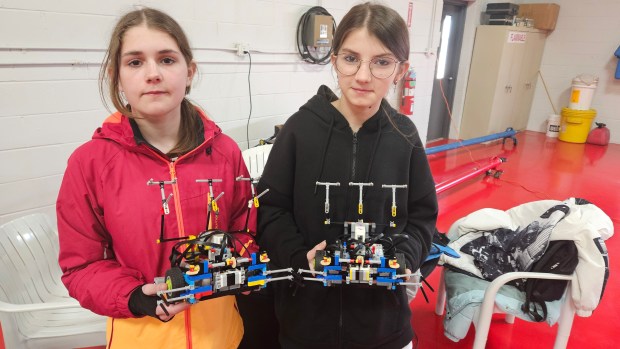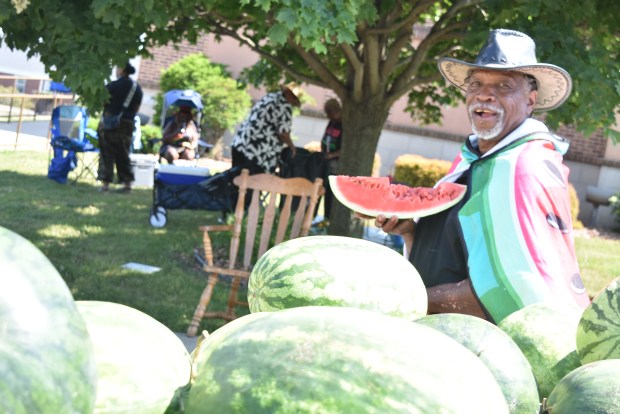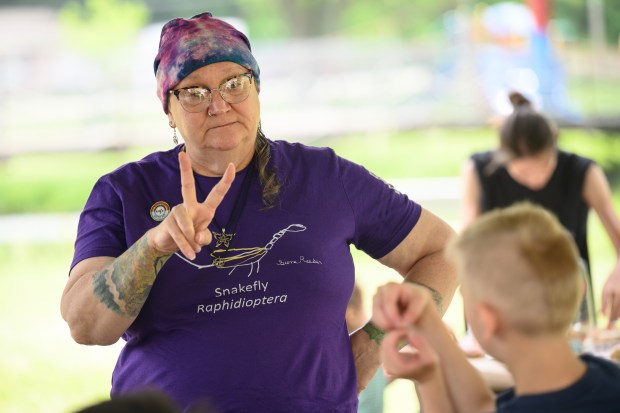Robots and the kids that built and operated them took center stage all day Friday at the Aurora Municipal Airport in Sugar Grove as 17 students 9 to 16 years old squared off in a competition during the first-ever Elite Robotics Camp, hosted by the U.S. Engineering League and the Wong Center for Education.
The Friday showcase was the culmination of a week-long camp program that included four days of workshops held at the Hampton Inn in Aurora.
A press release issued by the robotics camp said the 17 students involved spent time with a variety of national champions from multiple countries under Anthony Hsu of OFDL Robotics Lab Taiwan, “one of the world’s most accomplished coaches.”
Susan Mackafey, publicist for the Robotics group, said the event in Aurora came about as a result of the competitions that the Wong group hosts worldwide. William Wong, the founder of the Wong Center for Education, is the national organizer for the World Robot Olympiad, according to a press release.
“There were some students from Ukraine and Kazakhstan wondering if there would be any other kind of competitions as they wanted to hone their skills with one of the experts,” she said. “Will Wong ran with it, and has arranged the camp and the competition going on this Friday.”
Two of the camp members from Ukraine – Margo Proutorbva and Sofia Sova – were sponsored by the Wong Center for Education.
“It’s been an emotional trip for them,” Mackafey said, given the war going on in their homeland. “A lot of the kids are looking to train and do this as their careers and they love to compete. There are various levels of this competition that take place on a global scale.”
Local students were on hand as well, some of whom are being sponsored by the Wong Foundation, sources said.
Wong, of Naperville, was supervising Friday at the airport facility and said he started a robotics program with kids back in 2008.
“STEM has become a lot of the focus,” Wong said. “Even before I started, STEM was a big word. Engineering coding has always been there. It’s just how can we have kids do more of it. What’s happened is there are education companies like LEGO and other companies that have built robots that allow us to teach kids robotics in an easy fashion and we can create real world challenges off those robots so they literally are engineering, building and creating, designing and working with teams to have robots do tasks.”
Other than the collaborative learning, Wong said the biggest takeaways of the program “are problem-solving, figuring out how to make things work, a lot of trial-and-error, analysis and critical thinking.”
“There is teamwork, but the biggest is perseverance and working through the problems,” he said. “If the robot doesn’t work the first time or the second time or the 100th time, they are truly going through the engineering process – building, design and the whole cycle.”
Margo Proutorbva, 14, spoke about robotics and said through an interpreter she got interested in them two years ago.
“I’ve learned to assemble them,” she said. “The most difficult part of this has been when you assemble a robot with someone else – it’s way easier when you do it on your own. My robot can grab different objects, follow lines and turn in different ways.”
David Sharos is a freelance reporter for The Beacon-News.





